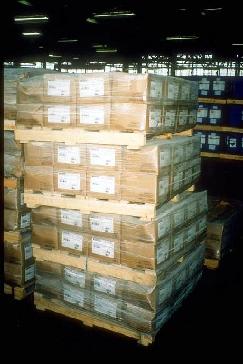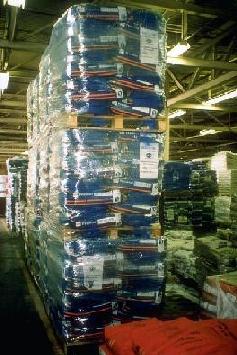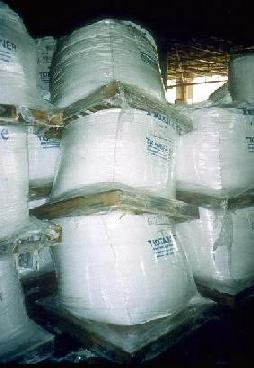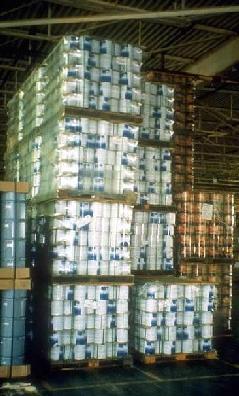
Figure 2: This sku is too heavy to stack higher but rack storage would make the space above usable.
The company data is copyrighted and proprietary. You may use it for the purposes of this course only. (If you would like to use it for something else, please contact me to discuss.)

Figure 2: This sku is too heavy to stack higher but rack storage would make the space above usable.

Figure 1: Floor-storage in 4-deep lanes.
The layout of the warehouse is a big decision that limits operating efficiencies ever after, so it is important to get it right. This is easiest in a unit-load warehouse (pallet-in/pallet-out) because the labor model is so simple. Every pallet requires a forklift driver to carry it from receiving to a storage location and later from the storage location to shipping. The challenge is to configure the warehouse so as to get the maximum utilization of space and labor.
This 3rd party warehouse stores pallets for an assortment of customers, such as local manufacturers who outsource their warehousing or distant manufacturers looking to improve service to customers near the warehouse.
The warehouse generates revenue by charging for handling each pallet in and out; plus rent for each pallet-position-month. Management of the warehouse must in turn pay rent on the facility based on the area of floorspace; naturally they want as many pallet-locations per unit area as possible in order to maximize their opportunities to generate revenue.

Figure 4: These pallets should go in rack. Here they are stacked too high in a vain effort to save floor space. Besides the danger, any savings in space is more than offset by the extra labor required to move the top pallets (one forklift must pull the pallet straight so another can insert forks).

Figure 3: This sku would lose space if in rack because there would no longer be enough clear height to stack it 4-high.
Here is a list of the sku's in the warehouse and something about their stackability: You may use either this spreadsheet in Microsoft Excel format or this text file.
Each row corresponds to one sku and the columns correspond to the following fields:
Design storage for the pallets described in the data file above. Specifically: